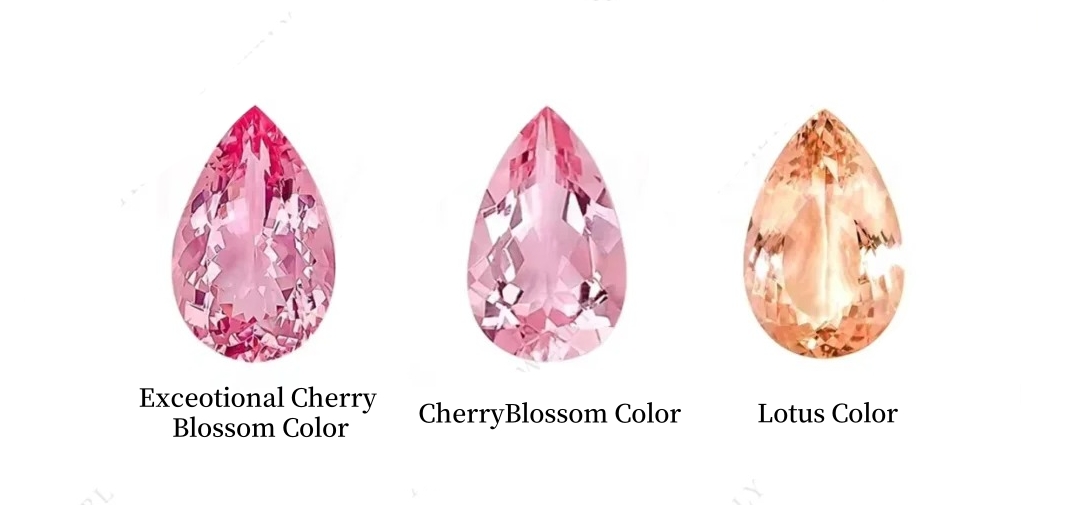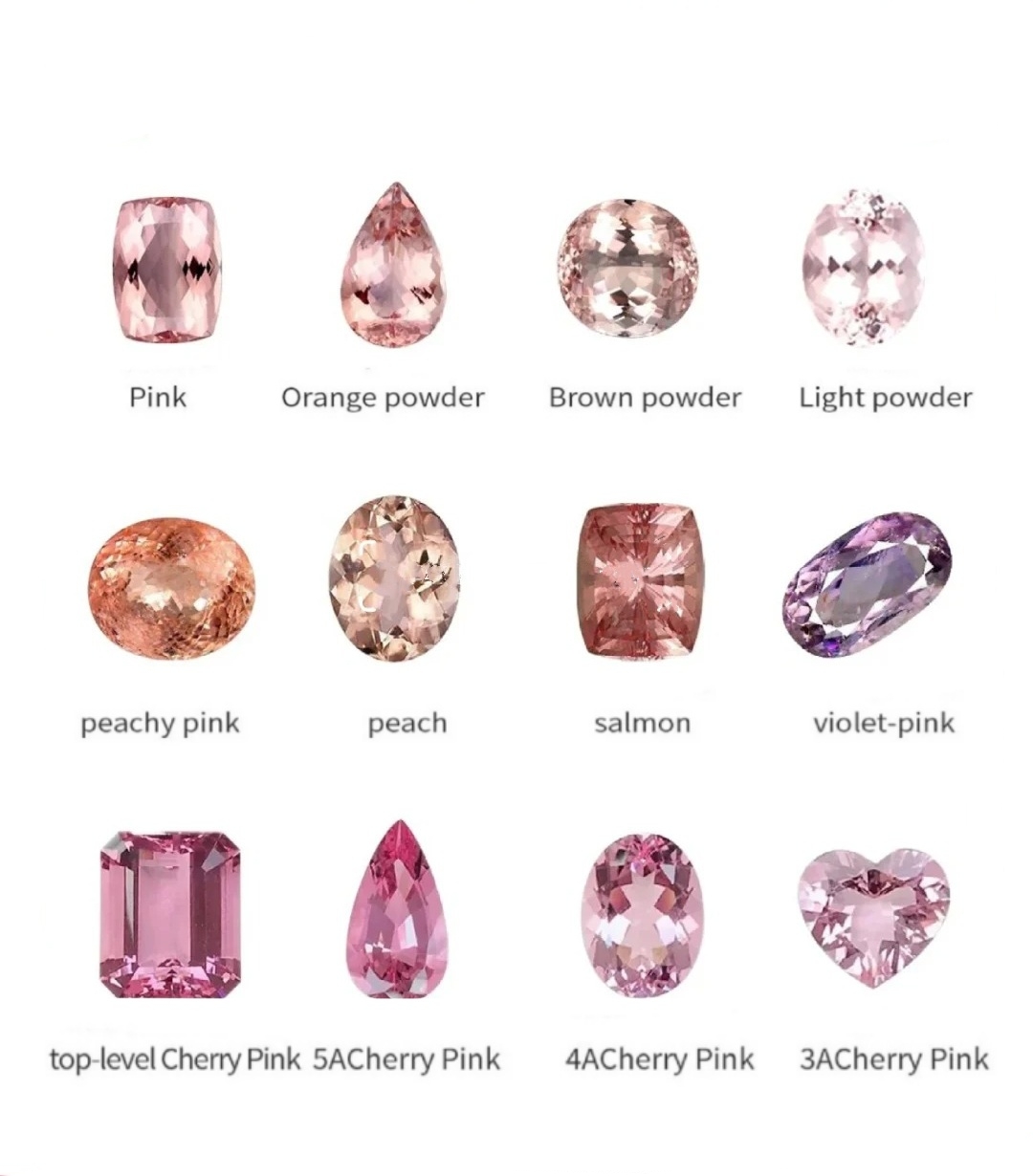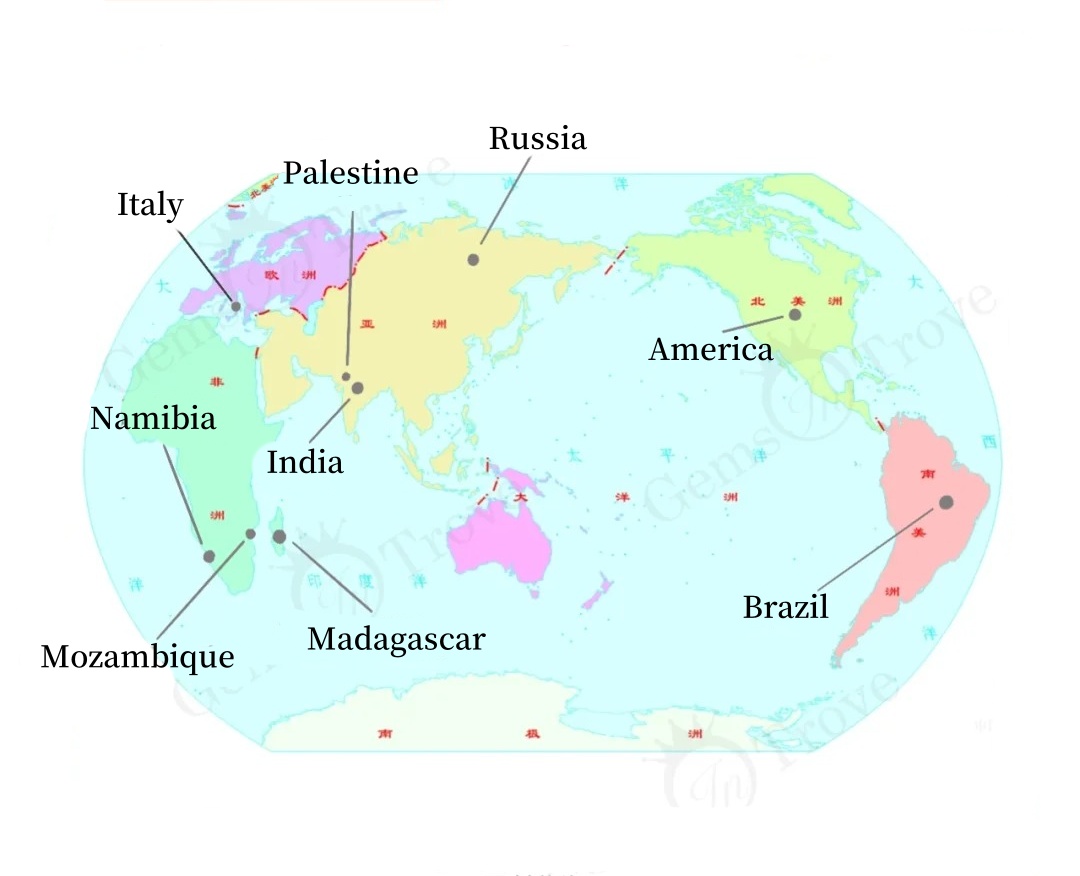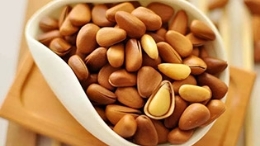🟠Morganiteite belongs to the beryl family, along with emerald and aquamarine, and is one of the few gemstones that are naturally pink in color due to the presence of the element manganese (Mn). It has fewer inclusions visible to the naked eye in its crystals, which gives it excellent clarity. Compared to pink diamonds, morganiteiteiteite’s affordable price also makes it a favorite of many people.
🟠In 1910, gem-quality pink beryl of good color and size was discovered on an island off the coast of Madagascar, and in December 1910, New York science announced that the gemstone was to be named morganite, from the name of J.P. morgan, an American financier and gemstone collector.
🔸Color:Pink, light orange red to light purple red, rose, peach
🔸Chemical composition:Be3A12(Si03)6
🔸Transparency: Transparent
🔸Luster: glassy
🔸Hardness:7.5-8
🔸Birefringence:0.008-0.009
🔸Crystal system: hexagonal


✅Morganiteite Colors
➡Morganiteite can be found in a range of pastel colors such as orange-pink, peach-pink, salmon, light pink, bright pink, pink, violet-pink and other pastel shades.
➡From the certificate of the Gemological Institute: the three elements of color (hue, saturation, lightness) classify the color of morganiteiteiteite as follows:Peachy-pink, Pink, orangy-peach, Brown-pink, Baby peach or baby pink.
➡In response to market demand, GUILD Gem Lab has launched the Cherry Blossom Color and Lotus Color color grades for morganiteiteiteite by comparing a large number of morganiteiteiteite specimens. The high quality Cherry Blossom Pink morganiteite, which is excellent in all aspects, has been given a new commercial grading color: Exceotional Cherry Blossom Color.


🌐Origin
➡It is mainly produced in pegmatite and dunite, with major sources in Minas Gerais, Brazil, Elba, Italy, Russia, Madagascar, the United States, India, Pakistan, Mozambique, and Namibia .
➡There are several large pegmatite mines of gem-quality morganiteiteiteite in Namibia, and beryl is also produced in Zimbabwe, Tanzania, and Zambia in Africa.
morganiteite is produced in many parts of the United States, with California being a famous source, and the first morganiteite was produced in California.
➡Morganiteite has been found in Xinjiang, Yunnan, Inner Mongolia, Hainan and Sichuan in China, with Xinjiang and Yunnan having the best quality.

✅Clarity
➡Morganite is generally high in clarity, with very few inclusions, but be sure to look out for cleavages within the stone when selecting it.
✅Cut
➡Due to the unique multidirectional coloration of morganite, a pale pink and a deeper, slightly bluish pink, the stone should be oriented carefully when cutting. Intensely colored morganites are rare, and usually the stone must be large enough to show the best color.

✅Optimization of morganite
There are two common optimal treatment methods for morganite stone: heat treatment and irradiation treatment.
- Heat treatment: Through heat treatment can change the color, green blue into blue, light blue into deep sky blue, yellow green into blue, orange yellow into pink, etc., these treatments are usually carried out at 400-450 ° C temperature, the results are stable, belong to the optimization type.
- Irradiation treatment: irradiation treatment is a common treatment method for beryl, which can make colorless greenstone yellow-green blue, pink orange and so on.
✅Selecting morganite Stone
➡Color:Depending on the budget to pick the right color grade, it is recommended to choose 3A or above
➡Cutting: Color and fire are two very important factors affecting the value of morganiteiteiteite, so when selecting, pay attention to the cut of the gemstone has not well show the sparkle of the pink morganiteiteiteite, too thin and too thick should be careful to choose!
➡Clarity:morganiteite has relatively few inclusions, so you can pick a relatively clean stone with no inclusions visible to the naked eye
✅How to tell the morganite stone is real
👀Observe color:
The color of morganite stone is usually pink, light orange, purple, rose and peach and other colors, the color is delicate and bright. If this color change is not observed, it may be a fake morganite stone.
👀Observed refraction:
morganiteite has a higher refractive index, and when viewed from different angles, it will show subtle changes in favor of light pink and dark pink with slightly blue. If you don’t see this refraction, it could be a fake morganite stone.
👀Density and hardness:
The density of morganiteite is high, about 2.80 ~ 2.90g/cm³, and the hardness is relatively high. If the test results do not meet these criteria, then it may be a fake morganite stone.
👀Observe Clarity
morganite stone is usually transparent or translucent, most of them have inclusions such as cracked cotton wool, and high clarity is relatively rare. Impenetrable and unobservable internal inclusions, possibly false morganiteiteiteite.


